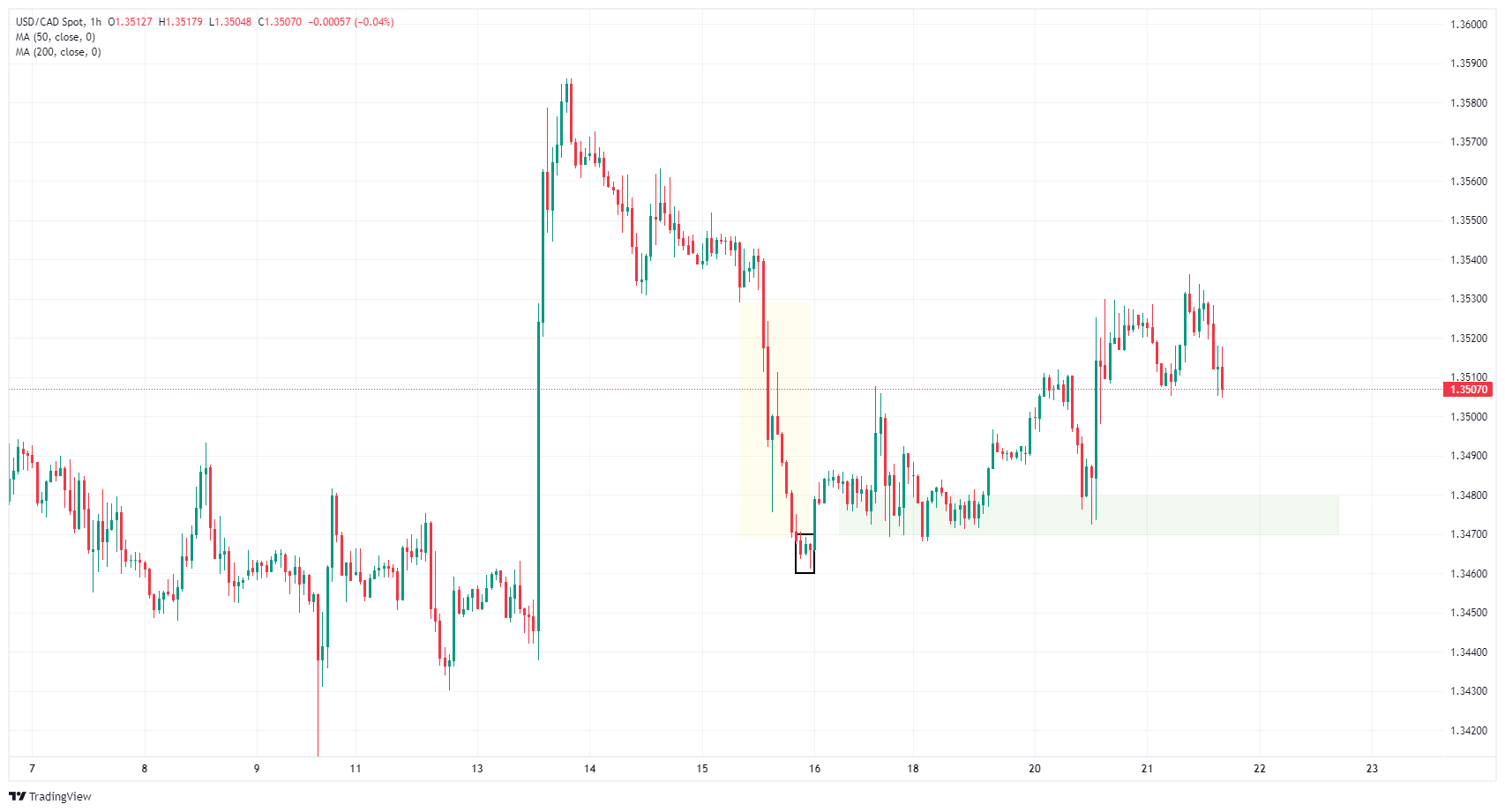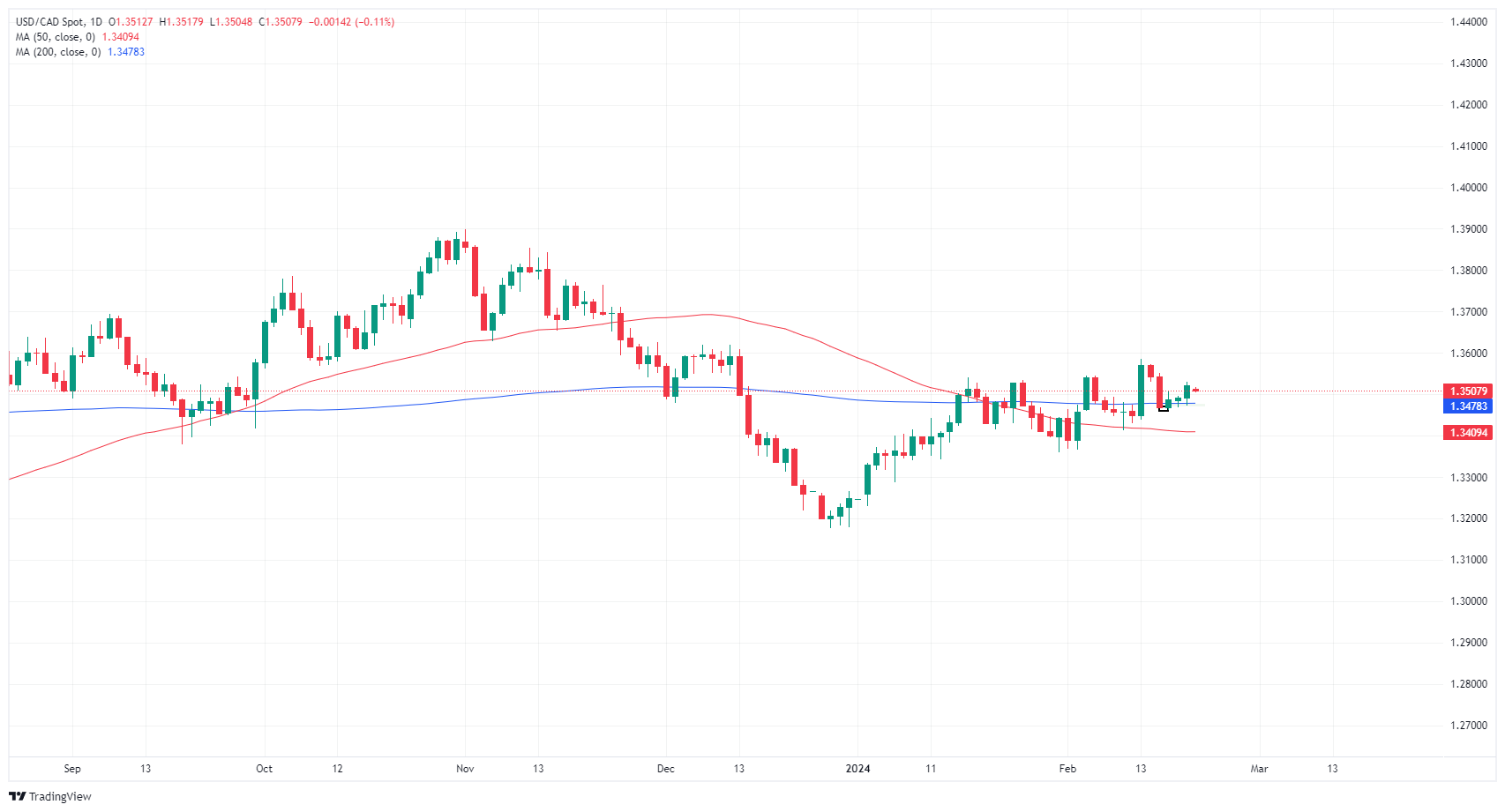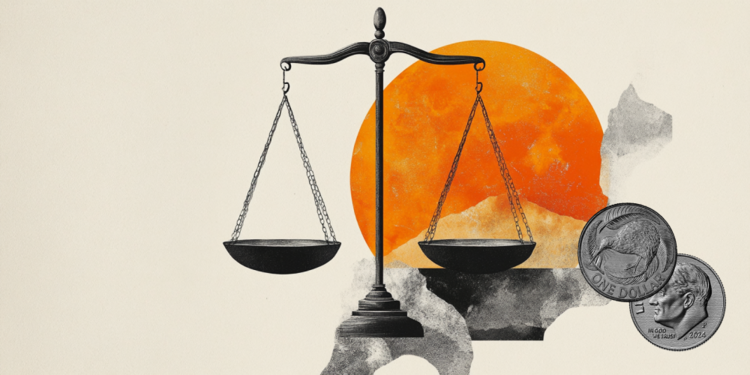- USD/CAD tested a new weekly high but remains tepid.
- Canada's new home price index fell slightly in January.
- All eyes are on the Fed FOMC Meeting Minutes.
He USD/CAD briefly tested new highs for the week, but continues to oscillate at short-term consolidation levels, as markets prepare to know the Minutes of the latest meeting of the Federal Open Market Committee (FOMC) of the Federal Reserve (Fed). Market momentum remains weak with US Purchasing Managers' Index (PMI) numbers due on Thursday, and the trading week will close with the Fed's latest monetary policy report on Friday .
In Canada, the new home price index fell in January at a lower annualized rate than before. Canadian retail sales are due out on Thursday but are likely to be affected by US PMI data.
Daily Market Movement Summary: USD/CAD Moves Cyclically Ahead of FOMC and Key Data Just Around the Corner
- Canada's new home price index fell 0.1% month-on-month in January, down from 0.0% previously.
- The year-on-year figure fell 0.7%, below the previous -0.9%.
- The minutes of the latest meeting of the Federal Open Market Committee (FOMC) will attract great interest as money markets prepare for a Fed rate cut in June.
- For his part, Richmond Fed President Thomas Barkin noted that, although the United States is in the “final phase” of its inflation problem, it still has a way to go.
- Thomas Barkin also noted that much of the current declines in inflation have been focused on goods, and that service prices remain problematic for the Fed's inflation targets.
- A rebound is expected in Canadian retail sales, due to be released on Thursday, with December month-on-month retail sales forecast at 0.8%, up from -0.2% previously.
- The US global manufacturing PMI for February, also expected on Thursday, is expected to decline to 50.5 from 50.7.
Quote of the Canadian Dollar today
Below is the percentage evolution of the Canadian Dollar (CAD) against the currencies listed today. The Canadian dollar was the weakest currency against the Swiss franc.
| USD | EUR | GBP | CAD | AUD | JPY | NZD | CHF | |
| USD | -0.03% | 0.00% | -0.11% | 0.14% | 0.20% | -0.10% | -0.22% | |
| EUR | 0.04% | 0.04% | -0.06% | 0.18% | 0.23% | -0.06% | -0.18% | |
| GBP | 0.00% | -0.04% | -0.11% | 0.13% | 0.21% | -0.10% | -0.21% | |
| CAD | 0.11% | 0.06% | 0.10% | 0.24% | 0.30% | 0.00% | -0.11% | |
| AUD | -0.13% | -0.22% | -0.14% | -0.25% | 0.06% | -0.24% | -0.36% | |
| JPY | -0.21% | -0.23% | -0.19% | -0.32% | -0.07% | -0.30% | -0.38% | |
| NZD | 0.10% | 0.06% | 0.10% | -0.01% | 0.23% | 0.30% | -0.12% | |
| CHF | 0.21% | 0.18% | 0.22% | 0.11% | 0.36% | 0.41% | 0.12% |
The heat map shows the percentage changes of the major currencies against each other. The base currency is chosen in the left column, while the quote currency is chosen in the top row. For example, if you choose the euro in the left column and scroll down the horizontal line to the Japanese yen, the percentage change in the box will represent EUR (base)/JPY (quote).
Technical Analysis: USD/CAD drifting just above 1.3500
USD/CAD found a little more room to the upside, touching a new high for the trading week, but the pair remains firmly embedded in near-term technical congestion. USD/CAD remains near the 1.3500 area as markets expect firm momentum in either direction.
The pair finally finished closing last week's fair value gap (FVG) at 1.3530. USD/CAD sees a strong support zone between 1.3480 and 1.3470, just above last week's Order Block (OB) near 1.3460. Technical indicators favor the continuation of the bullish breakout in character, but only if the pair is able to build enough momentum to return to last week's bid highs near 1.3585.
Daily candles show USD/CAD still struggling near the 200-day SMA at 1.3478, but a pattern of higher lows supports mild bullish momentum. USD/CAD is up 2.5% from the last swing low in the 1.3200 area, but still has a ways to go on the upside, down nearly 3% from last November's high near 1.3900.
USD/CAD Hourly Chart
USD/CAD Daily Chart
Frequently Asked Questions about the Canadian Dollar
What factors determine the price of the Canadian dollar?
The key factors that determine the price of the Canadian dollar (CAD) are the level of interest rates set by the Bank of Canada (BoC), the price of oil, Canada's main export product, the health of its economy, inflation and the trade balance, which is the difference between the value of Canadian exports and its imports. Other factors are market confidence, that is, whether investors bet on riskier assets (risk-on) or look for safe assets (risk-off), with the risk-on being positive for the CAD. As its largest trading partner, the health of the US economy is also a key factor influencing the Canadian dollar.
How do Bank of Canada decisions affect the Canadian dollar?
The Bank of Canada (BoC) exerts significant influence over the Canadian Dollar by setting the level of interest rates that banks can lend to each other. This influences the level of interest rates for everyone. The BoC's main objective is to keep inflation between 1% and 3% by adjusting interest rates up or down. Relatively high interest rates are usually positive for the CAD. The Bank of Canada can also use quantitative easing and tightening to influence credit conditions, with the former being negative for the CAD and the latter being positive for the CAD.
How does the price of oil affect the Canadian dollar?
The price of oil is a key factor influencing the value of the Canadian Dollar. Oil is Canada's largest export, so the price of oil tends to have an immediate impact on the value of the CAD. Generally, if the price of oil rises, the CAD also rises, as aggregate demand for the currency increases. The opposite occurs if the price of oil falls. Higher oil prices also tend to lead to a higher probability of a positive trade balance, which also supports the CAD.
How does inflation data influence the value of the Canadian Dollar?
Although inflation has traditionally always been considered a negative factor for a currency, as it reduces the value of money, the opposite has actually happened in modern times, with the relaxation of cross-border capital controls. Higher inflation often leads central banks to raise interest rates, attracting more capital inflows from global investors looking for a lucrative place to store their money. This increases the demand for the local currency, which in the case of Canada is the Canadian Dollar.
How does economic data influence the value of the Canadian dollar?
The published macroeconomic data measures the health of the economy and may have an impact on the Canadian dollar. Indicators such as GDP, manufacturing and services PMIs, employment and consumer confidence surveys can influence the direction of the CAD. A strong economy is good for the Canadian dollar. Not only does it attract more foreign investment, but it may encourage the Bank of Canada to raise interest rates, resulting in a stronger currency. However, if economic data is weak, the CAD is likely to fall.
Source: Fx Street
I am Joshua Winder, a senior-level journalist and editor at World Stock Market. I specialize in covering news related to the stock market and economic trends. With more than 8 years of experience in this field, I have become an expert in financial reporting.







